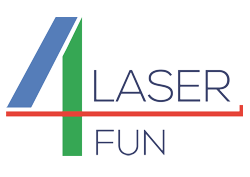Results of the work in the Laser4Fun project has been published as:
Alfredo I. Aguilar-Morales, Sabri Alamri, Bogdan Voisiat, Tim Kunze and Andrés F. Lasagni. Nano-Roughness on the Wettability Performance of Microstructured Metallic Surface Using Direct Laser Interference Patterning. Materials 2019, 12(17), 2737.
Abstract
Superhydrophobic natural surfaces usually have multiple levels of structure hierarchy, particularly microstructures covered with nano-roughness. The multi-scale nature of such a surface reduces the wetting of water and oils, and supports self-cleaning properties. In this work, in order to broaden our understanding of the wetting properties of technical surfaces, biomimetic surface patterns were fabricated on stainless steel with single and multi-scale periodic structures using direct laser interference patterning (DLIP). Micropillars with a spatial period of 5.5 µm and a structural depth of 4.2 µm were fabricated and covered by a sub-micro roughness by using ultrashort laser pulses, thus obtaining a hierarchical geometry. In order to distinguish the influence of the different features on the wettability behavior, a nanosecond laser source was used to melt the nano-roughness, and thus to obtain single-scale patterns. Then, a systematic comparison between the single- and multi-scale structures was performed. Although, the treated surfaces showed hydrophilic behavior directly after the laser treatment, over time they reached a steady-state hydrophobic condition. However, the multi-scale structured metal showed a contact angle 31° higher than the single-scale geometry when the steady-state conditions were reached. Furthermore, the impact of the surface chemistry was investigated by energy dispersive X-ray spectroscopy (EDX) and X-ray photoelectron spectroscopy (XPS) analyses. Finally, a hydrophobizing agent was applied to the laser treated samples in order to further enhance the water contact angles and to determine the pure contribution of the surface topography. In the latter case, the multi-scale periodic microstructures reached static contact angles of 152° ± 2° and a contact angle hysteresis of only 4° ± 2°, while the single-scale structures did not show superhydrophobic behavior. These results definitely suggest that multi-scale DLIP structures in conjunction with a surface chemistry modification can promote a superhydrophobic regime.
